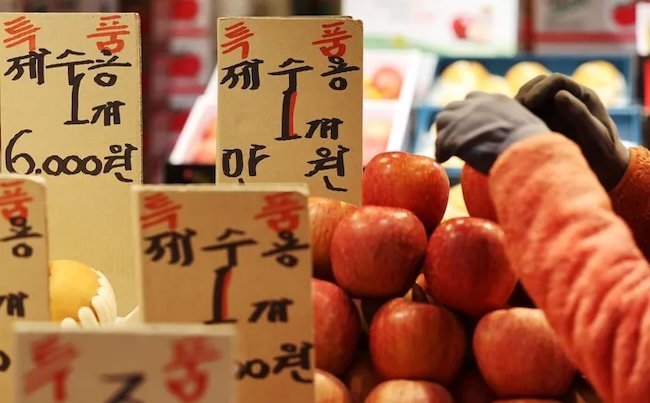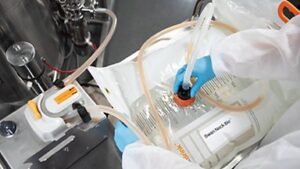Friday, 26 September 2025
South Korea’s fruits and vegetables dominate inflation list in 2024
This surge was due to low stock levels from 2023 Last year, South Korea experienced significant price increases in food items, particularly in fruits and vegetables, according to data from…

This surge was due to low stock levels from 2023
Last year, South Korea experienced significant price increases in food items, particularly in fruits and vegetables, according to data from Statistics Korea. Among 458 items in the consumer price index, Asian pears recorded the largest price hike, soaring by 71.9 per cent in 2024. This surge was due to low stock levels from 2023, compounded by extreme weather events such as heavy rain and heat waves that reduced supply.
Tangerines followed with a 46.2 per cent increase, driven by poor harvests in the latter half of the year and rising demand for alternative fruits. Other fruits that saw substantial price jumps include persimmons (36.6 per cent) and apples (30.2 per cent), both similarly affected by climate-related disruptions.
Several other food items also experienced significant price hikes, including cabbage (25.0 per cent), radishes (24.5 per cent), dried seaweed (21.8 per cent), tomatoes (21.0 per cent), and carrots (20.9 per cent). These increases have made food inflation a pressing concern for consumers.
The only non-food item in the top 10 was computer repair costs, which rose by 30.1 per cent. This increase was attributed to higher prices for electronic components and rising labour costs.
While food inflation surged, some products saw price declines. Electric rice cookers had the largest price drop at 10.6 per cent due to retailers offering discount promotions. Mango prices also fell by 10.4 per cent, thanks to an increase in imports under a tariff exemption program. Additionally, ginger (-9.2 per cent), potatoes (-8.5 per cent), and oysters (-7.9 per cent) saw price declines attributed to higher production levels.
This data highlights the impact of extreme weather conditions and fluctuations in supply chains on food prices in South Korea, with inflationary pressures continuing to influence consumer spending habits into 2025.
Technology
Nestlé UAE and Emirates Foundation partner to advance national food waste reduction goals
Sep 26, 2025 | Company News
SADAFCO to launch Tetra Pak E3 speed hyper line in Saudi Arabia
Sep 26, 2025 | Company News
MARMADE to harness marine biomass for innovation in food and feed ingredients
Sep 25, 2025 | Company News
Food Testing
Reducing Testing Time from 15 Days to 72 Hours: bioMérieux Leads the Way
Sep 19, 2025 | Food Safety and Testing
MycoTWIN boosts Türkiye’s Mycotoxin research with EU support
Sep 17, 2025 | Europe
Tetra Pak and Swan Neck Bio collaborate to simplify scaling of new food
Sep 11, 2025 | Company News
More Popular
Marico showcases commitment to food innovation and better health at World Food India 2025
Sep 26, 2025 | Company News
Nestlé UAE and Emirates Foundation partner to advance national food waste reduction goals
Sep 26, 2025 | Company News
SADAFCO to launch Tetra Pak E3 speed hyper line in Saudi Arabia
Sep 26, 2025 | Company News






